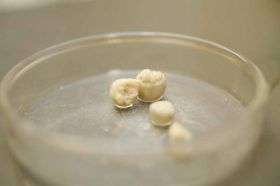Scientists discover new life in the Antarctic deep sea

Scientists have found hundreds of new marine creatures in the vast, dark deep-sea surrounding Antarctica. Carnivorous sponges, free-swimming worms, crustaceans, and molluscs living in the Weddell Sea provide new insights into the evolution of ocean life.
Reporting this week in the journal Nature, scientists describe how creatures in the deeper parts of the Southern Ocean - the source for much of the deep water in the world ocean – are likely to be related to animals living in both the adjacent shallower waters and in other parts of the deep ocean.
A key question for scientists is whether shallow water species colonised the deep ocean or vice versa. The research findings suggest the glacial cycle of advance and retreat of ice led to an intermingling of species that originated in shallow and deep water habitats.
Lead author Professor Angelika Brandt from the Zoological Institute and Zoological Museum, University Hamburg says,
"The Antarctic deep sea is potentially the cradle of life of the global marine species. Our research results challenge suggestions that the deep sea diversity in the Southern Ocean is poor. We now have a better understanding in the evolution of the marine species and how they can adapt to changes in climate and environments."
Dr Katrin Linse, marine biologist from British Antarctic Survey, says, "What was once thought to be a featureless abyss is in fact a dynamic, variable and biologically rich environment. Finding this extraordinary treasure trove of marine life is our first step to understanding the complex relationships between the deep ocean and distribution of marine life."
Three research expeditions, as part of the ANDEEP project (Antarctic benthic deep-sea biodiversity), onboard the German research ship Polarstern took place between 2002 and 2005. An international team from 14 research organisations investigated the seafloor landscape, its continental slope rise and changing water depths to build a picture of this little known region of the ocean. They found over 700 new species.
Source: British Antarctic Survey















